Grand Ole Opry Ticket and Basic Show Information
It is one of the most famous music events in the world and the center of the country music universe. For over 80 years, the Grand Ole Opry calendar has been full of shows featuring some of the biggest names in music from Garth Brooks to Reba McEntire.
Today, Grand Ole Opry events are mostly held at its home at the Grand Ole Opry House. Although during winter months the show will pick up and go to its former home, Ryman Auditorium, located in downtown Nashville. If you are looking for Grand Ole Opry tickets, make sure to understand which venue the show will be located in and read the associated seating guide. The venues do vary in the experience they bring to fans. View the schedule below to see where the show will be when you are looking to go.
When looking for Grand Ole Opry tickets it is highly suggested to go to the tour as well. These tours happen daily and will give you a backstage look at everything that happens before a show. The tour is a great opportunity to get an understanding of the historical significance of the show, its impact on the country community, and understand why today's stars are so eager to play.
While seeing the show is a great experience on its own, many fans care more about who is playing the Grand Ole Opry. The lineup changes show to show and week to week. Be sure to check the lineup which is typically included with the show name on the Grand Ole Opry Schedule.
Best Seats at Grand Ole Opry House
If not familiar with the "Grand Ole Opry", it certainly wouldn't be a reach to assume a massive, extravagant venue which holds tens of thousands of visitors. However, the Grand Ole Opry House seating chart brings about a much more intimate feel - where everyone in the house has a clear view of the performances. The capacity sits 4,400 music fans on a weekly basis. Of those, what are the best seats? Where should you look to have the best experience among the 4,400 fans? Let's take a look!
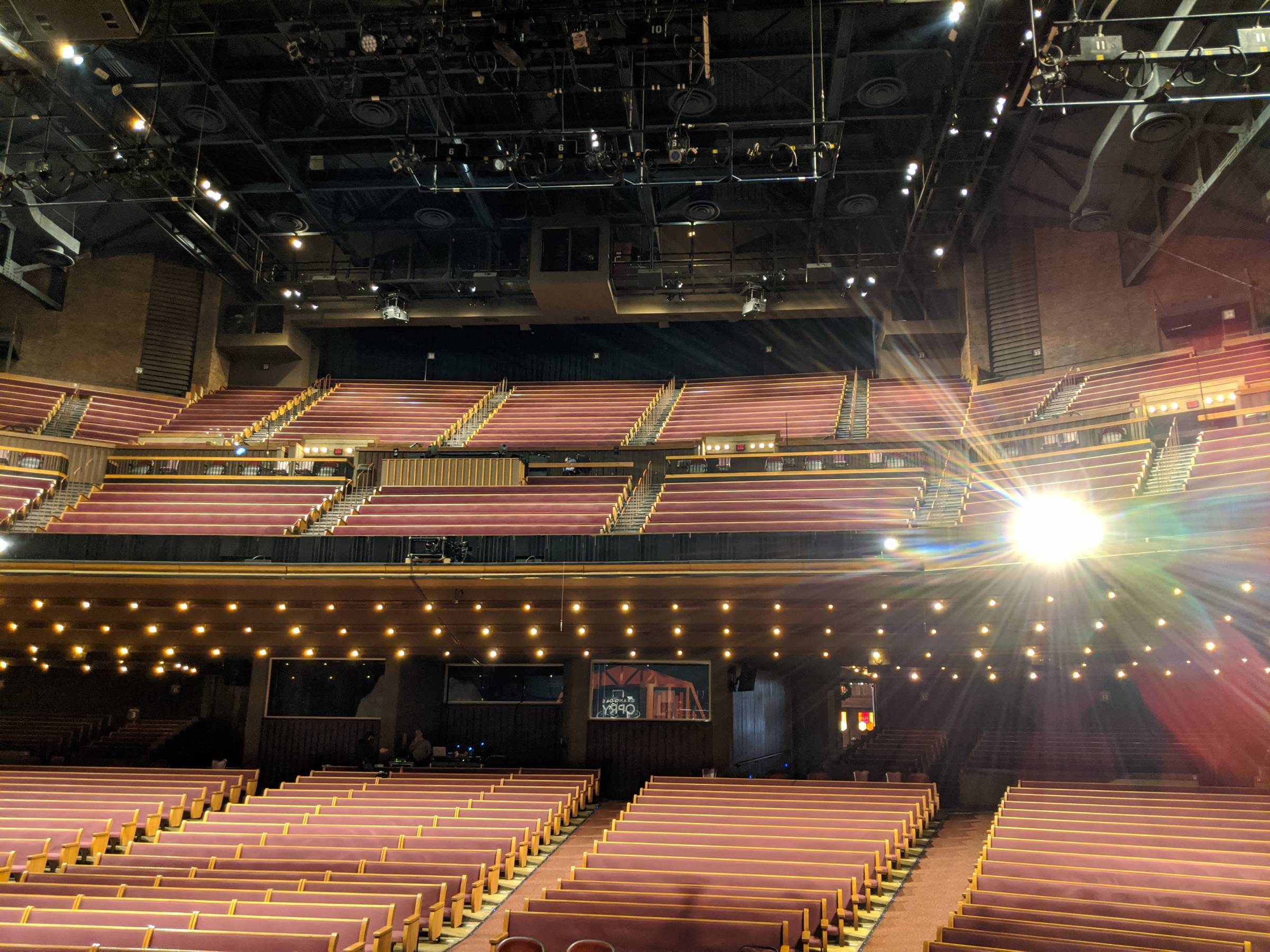
Closest Seats at Grand Ole Opry House
To be close, there is only one option - Main Floor tickets. Specifically sections 3, 4, and 5 will bring you close to seeing your favorite artists perform. For these three sections, the double lettered rows are the closest to the stage. Double letter rows go from AA-FF before starting at A again (sections 3-5 actually start with row BB). This would makes rows A, B, and C be 7, 8, and 9 rows from the stage.
From our experience, after about row C the intimacy begins to fade. If going for a certain artist, the double lettered rows in sections 1 and 7 will be just as close and intimate. The only difference for these seats is that since the stage comes out into the seating area with a rounded stage they do have more of a "side view" feel to them.
Best for the Views of the Grand Ole Opry
Sitting close can be out of the budget for many of us, so don't get discouraged. You can still find tickets for the Grand Ole Opry at a reasonable price and have among some of the best seats in the house. The mezzanine level in sections 18-22 is a fantastic place to sit for an overall great experience at the Grand Ole Opry. Sitting here is a balance between price, distance, and experience.
For many who are visiting the Grand Ole Opry House for the first time, these seats will allow you to see everything. The stage, the backdrop, the crowd will all be in view. The difference in views between rows on the mezzanine level are not very different.
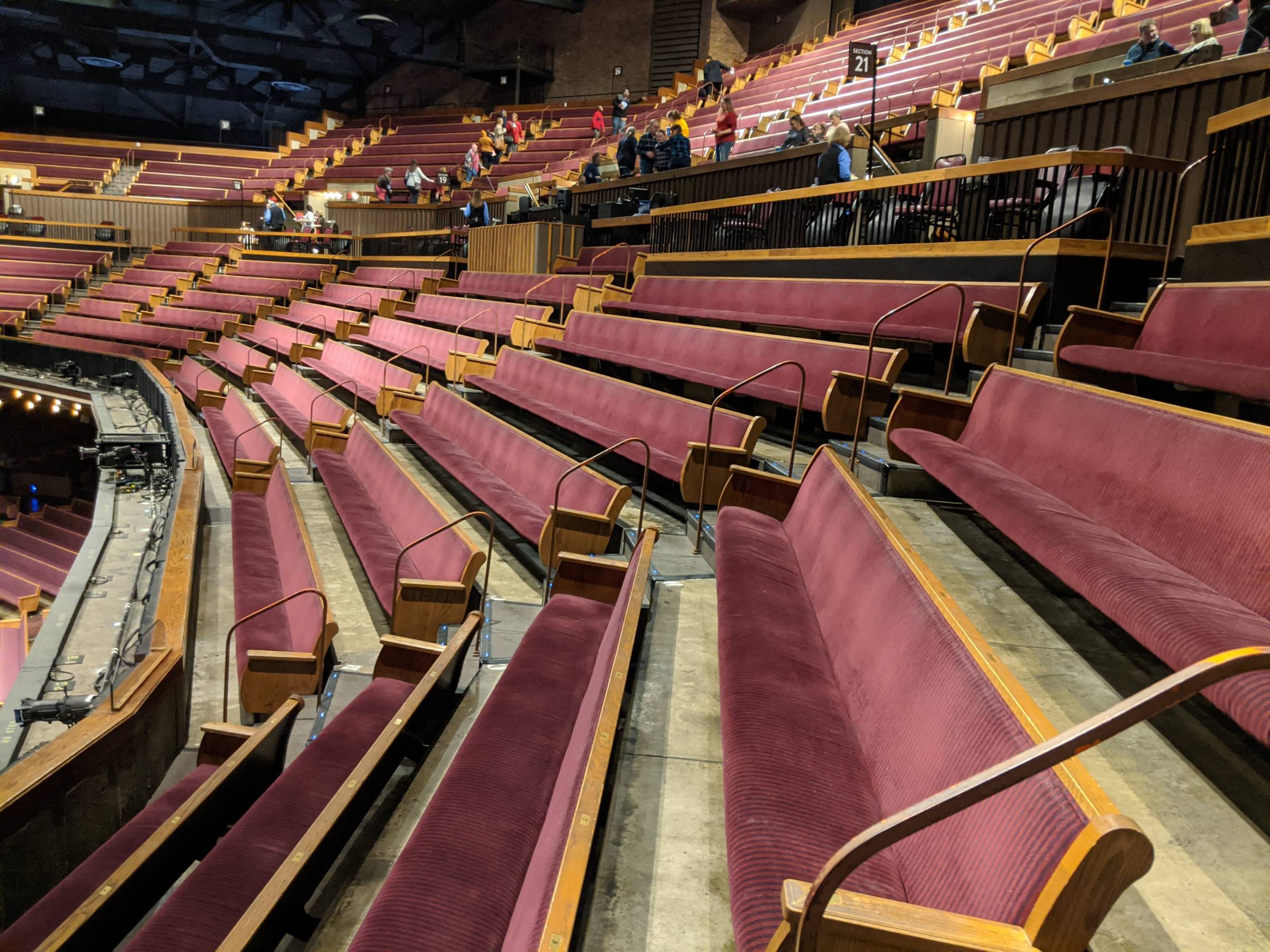
Selecting Seats for Those on a Budget
The Opry House was specifically designed with the Grand Ole Opry in mind. Unlike the Ryman Auditorium, every seat has a view. But just because you'll see the show from anywhere doesn't mean you can't still be mindful of getting the best seats for your budget.
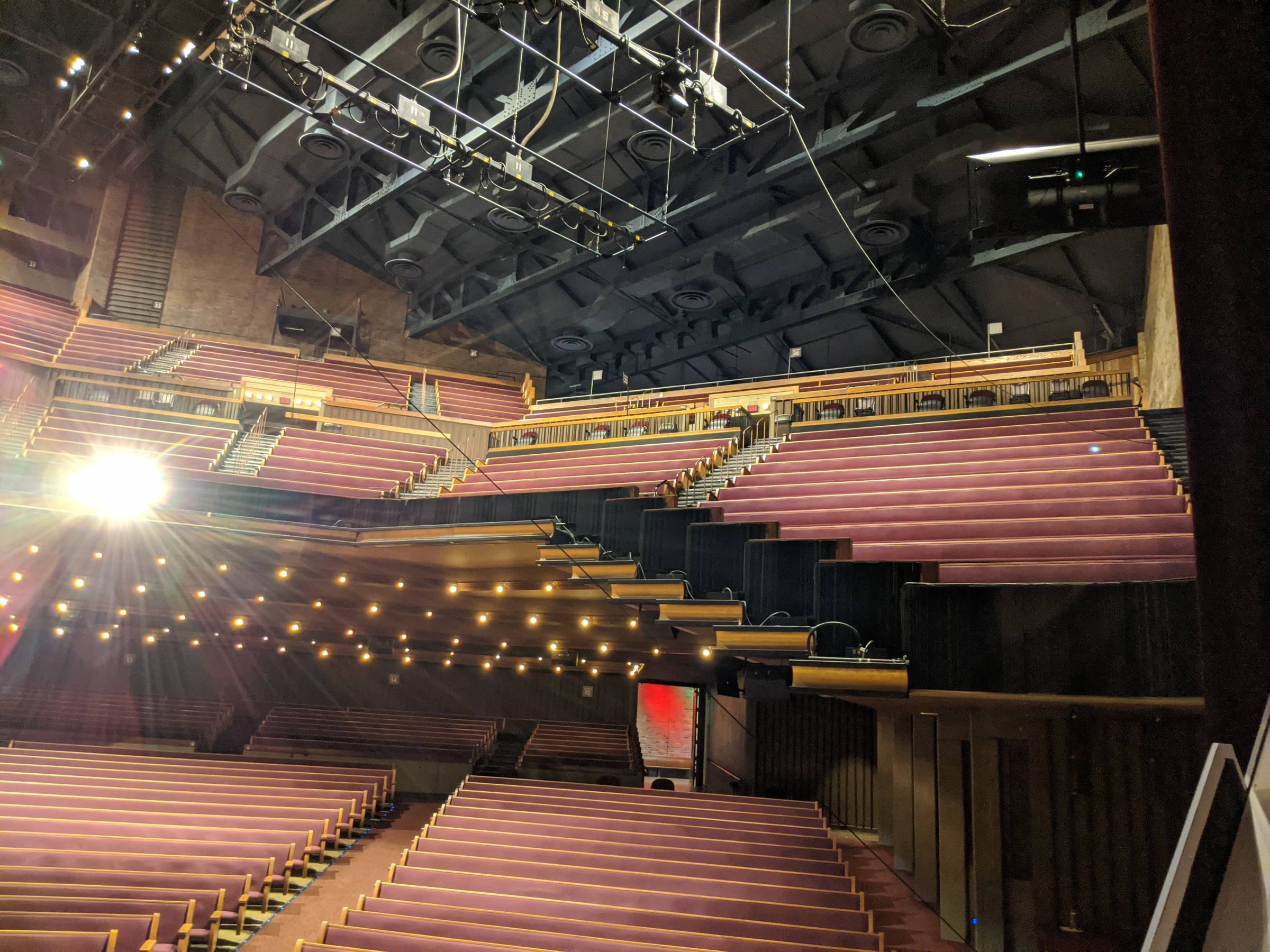
For this we say grab the corner mezzanine seats! Specifically rows AA-DD in sections 16 and 24. While the side and balcony may seem like deterrents, these seats are actually among some of the closest at the Grand Ole Opry House! Due to the extreme overhang, row AA in these mezzanine sections are almost directly above row A on the main floor. The only difference is height.
Of course the downside is that they are at an much stronger angle. Parts of the show deeper on stage may be slightly out of view. However, if you're there for the artist standing in the circle, these will typically be the closest you can get at a lower price point.
Ryman Auditorium vs. Grand Ole Opry House
Some fans coming to Nashville look to see the Grand Ole Opry for the first time and are confused when the Grand Ole Opry is at Ryman Auditorium and not the venue that includes the show's name.
So what's the difference? Below will compare Ryman Auditorium vs. Grand Ole Opry House and look at some of their biggest differences.
What's the Difference Between Ryman Auditorium and Grand Ole Opry House?
There are a few big differences between the Ryman Auditorium and the Grand Ole Opry House. One of the biggest is the location. The other is the seating arrangements and capacity of the venues.
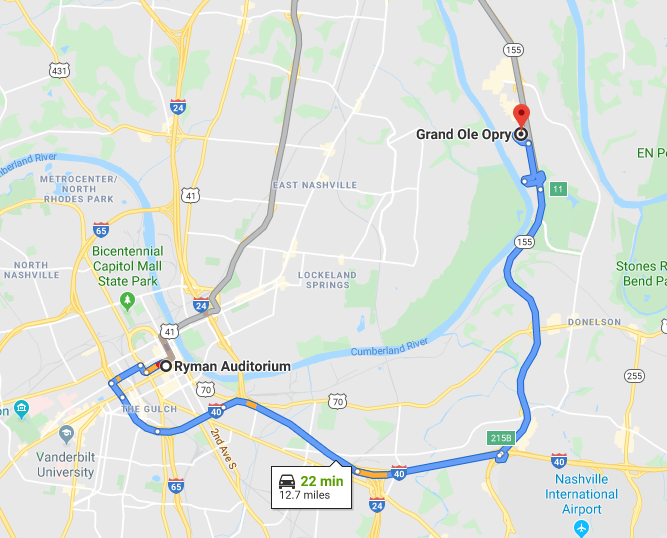
Locations of Grand Ole Opry Shows
Grand Ole Opry House Location
The Grand Ole Opry House, while still located in within Nashville limits, is not near the immediate downtown area. Instead it is about a 13 mile drive to the location of a former amusement park and what is now a bustling spot for tourists, locals, and businesses alike. The Grand Ole Opry House became the new home of Grand Ole Opry events in 1974 and hosts the historic show every Tuesday, Friday, and Saturday during the months of February through October.
Ryman Auditorium Location
"The Ryman" is located in downtown Nashville, just steps away from the popular Broadway Street. This venue was the home of the Opry since 1943 until the new Opry House was built in 1974. Today, the Ryman Auditorium hosts the Opry during the winter months of November-January to keep the tradition running at a venue that hosted the event for so many years.
Seating Information by Venue for the Grand Ole Opry
Grand Ole Opry House Seating Information
Since it was built with hosting the Opry in mind, the Grand Old Opry House seat views are all great. The stage is designed to give every seat in the house a clear, unobstructed view of the performance - something the Ryman Auditorium did not have.
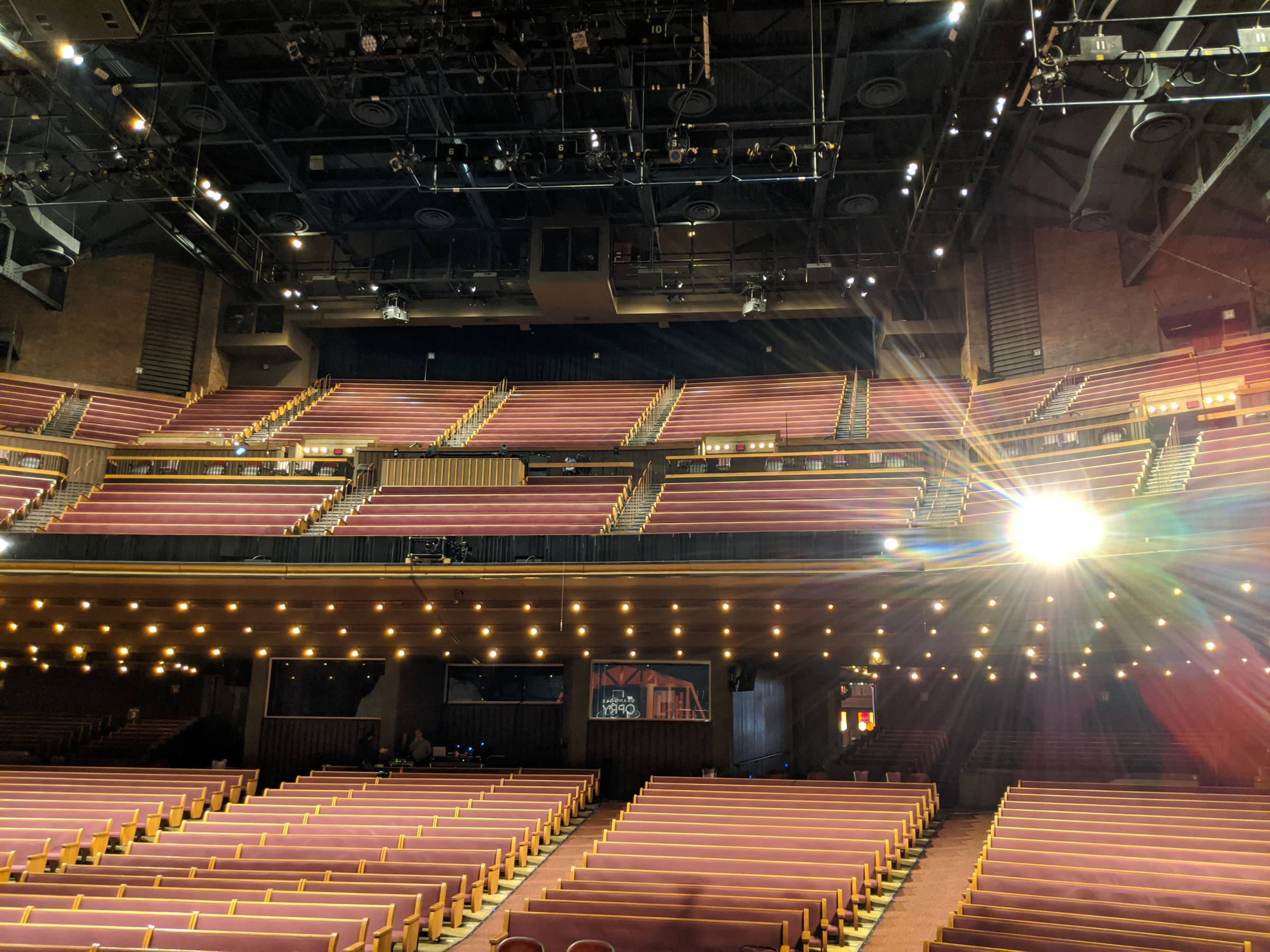
The seating is split into 2 levels, the main floor and an upper level which splits into a mezzanine and balcony. The seats are comfortable bench-like church pews that are representative of the Ryman Auditorium's seat style.
Ryman Auditorium Seating Infomation
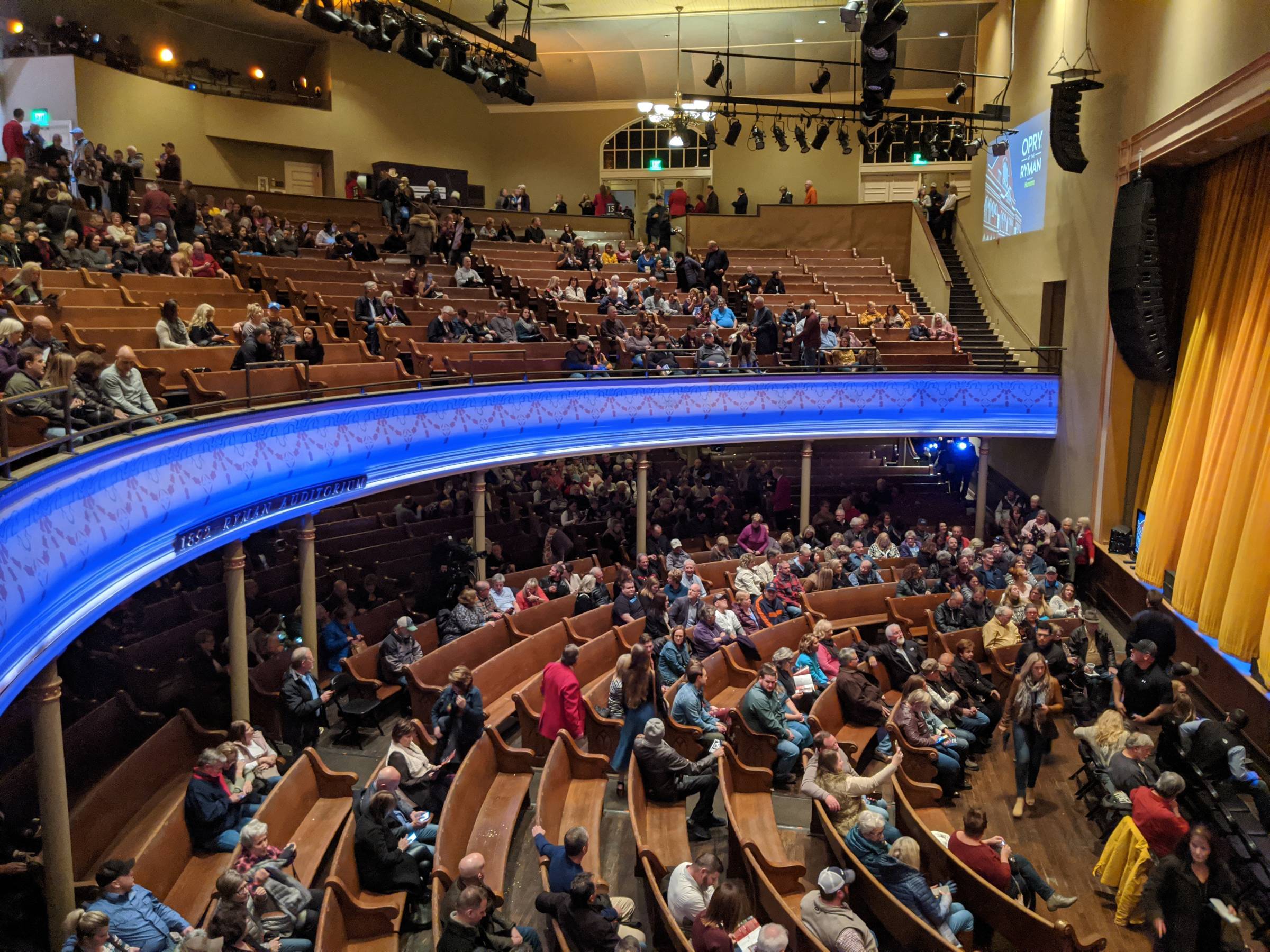
The Ryman Auditorium was never built with the idea of having a weekly country music in mind. In fact, it was made for a very different purpose - church! This leads to many unique characteristics that impact the concert going experience at the venue.
For one the seat style is that of church pews. There is no seat padding or individual seats for fans. Instead, fans will find a cramped spot on a pew. The auditorium has two levels with a main floor and balcony.
Due to the balcony overhang, views about half way up the main floor will begin to be be condensed. By the time you make it to the last rows, country music fans are left with a sliver of a view for the Grand Ole Opry show. For this reason, the balcony offers some of the best seats at Ryman Auditorium with unobstructed views!
Opry at the Ryman - Where to Sit
The Ryman Auditorium seating capacity is officially listed as 2,362. Although a smaller venue, seat views at the Ryman can vary dramatically and it is important to be selective when looking for Grand Ole Opry tickets. Below we will look at the best seats, areas to avoid, and other important topics to know when going to see the Opry at the Ryman.
Which Seats Are the Best Seats?
The best seats to see the Grand Ole Opry can depend on the experience you are trying to have at the show. If you are attending to watch a specific artist perform that night you will want to sit close. For music fans just looking enjoy an Opry show, there are better seats to have a better overall experience.
Sitting Close for an Artist
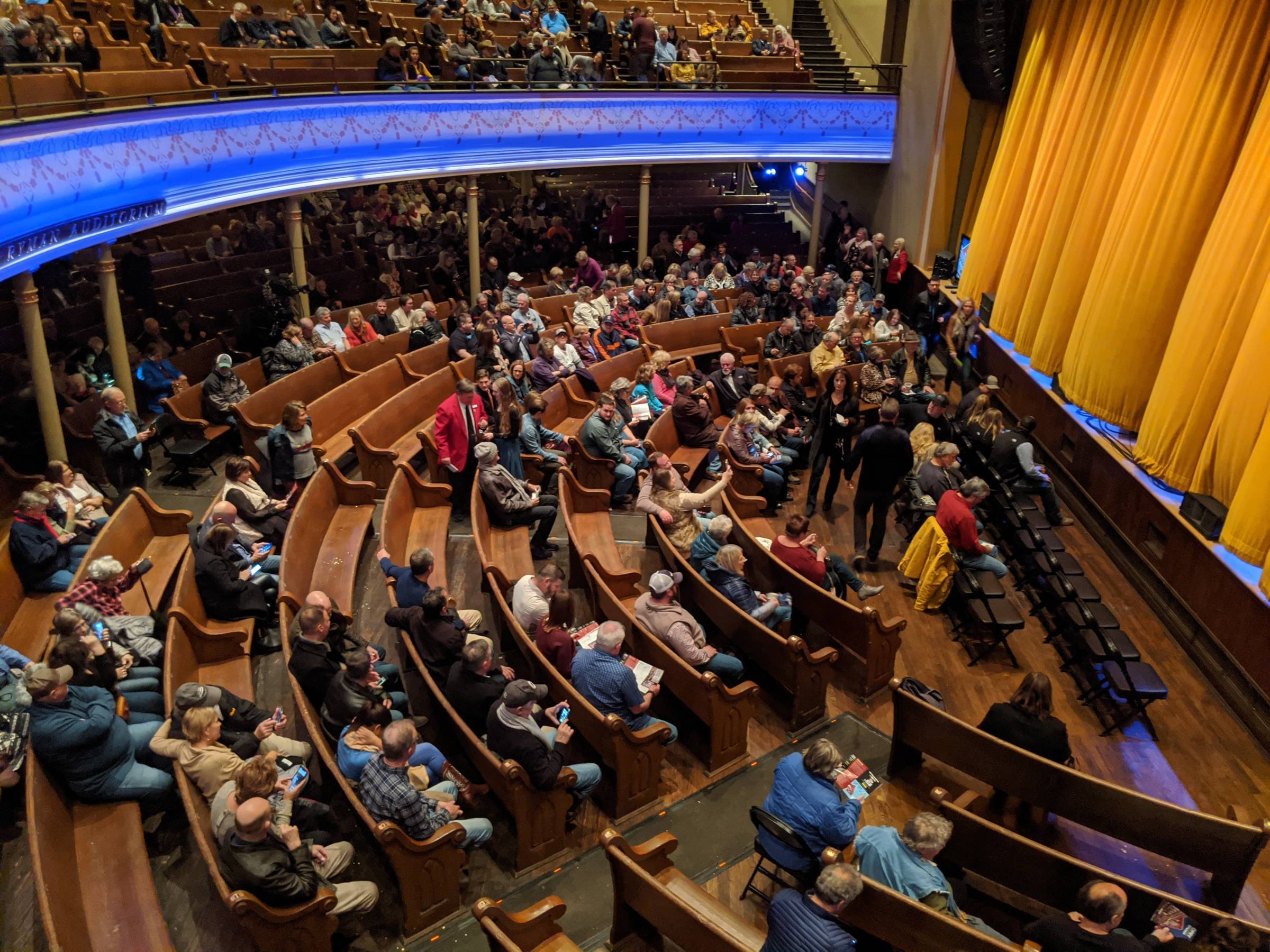
Any seat located between rows A-M on the main floor (sections 1-8) will provide what feels like a VIP intimate experience to the show. When the curtain opens and the artists are just feet away, the show really comes to life when sitting this close. For anyone going to see a specific performer, or if this is not your first time seeing the Opry at the Ryman, these seats are a fantastic place to have very memorable experience.
For the Best Grand Ole Opry Experience
Many people going to see the Grand Ole Opry for the first time want to understand what the experience is like. For these types of fans, the best seats are in the balcony.
While that may sound like it is far away, don't worry, it isn't. The Ryman is closer to a high school theater than it is a large auditorium and the front rows of the balcony are closer to the stage than the majority of main floor seating. Sitting up here allows fans to take in the beauty of the stained glass windows and the entire experience of seeing the Opry at the Ryman.
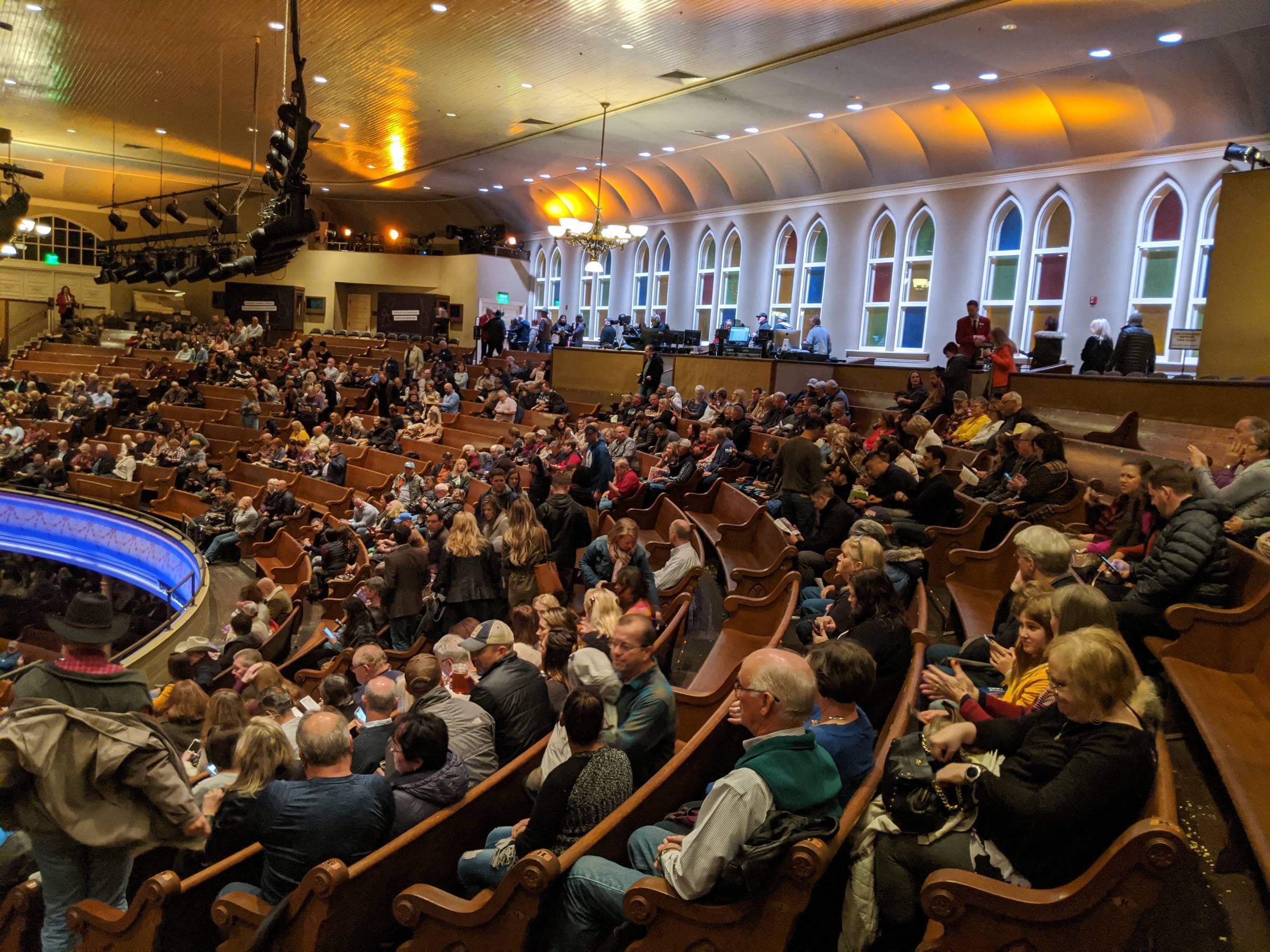
Avoid the 'Bad Seats' at Ryman Auditorium
As small as the Ryman is, there are still tickets to see the Grand Ole Opry that you will want to avoid purchasing. All of these are on the main floor and are due to the balcony overhang which restricts the view and makes the experience of the show more enclosed.
This will start happening at row N of any main floor section 1-8. Each row as you move further back will cut off more and more of the stage until you are left with a sliver of the live performance. There are TV's located under the overhang, but for fans at a live show if they wanted to watch the performance on TV they could just stay home.
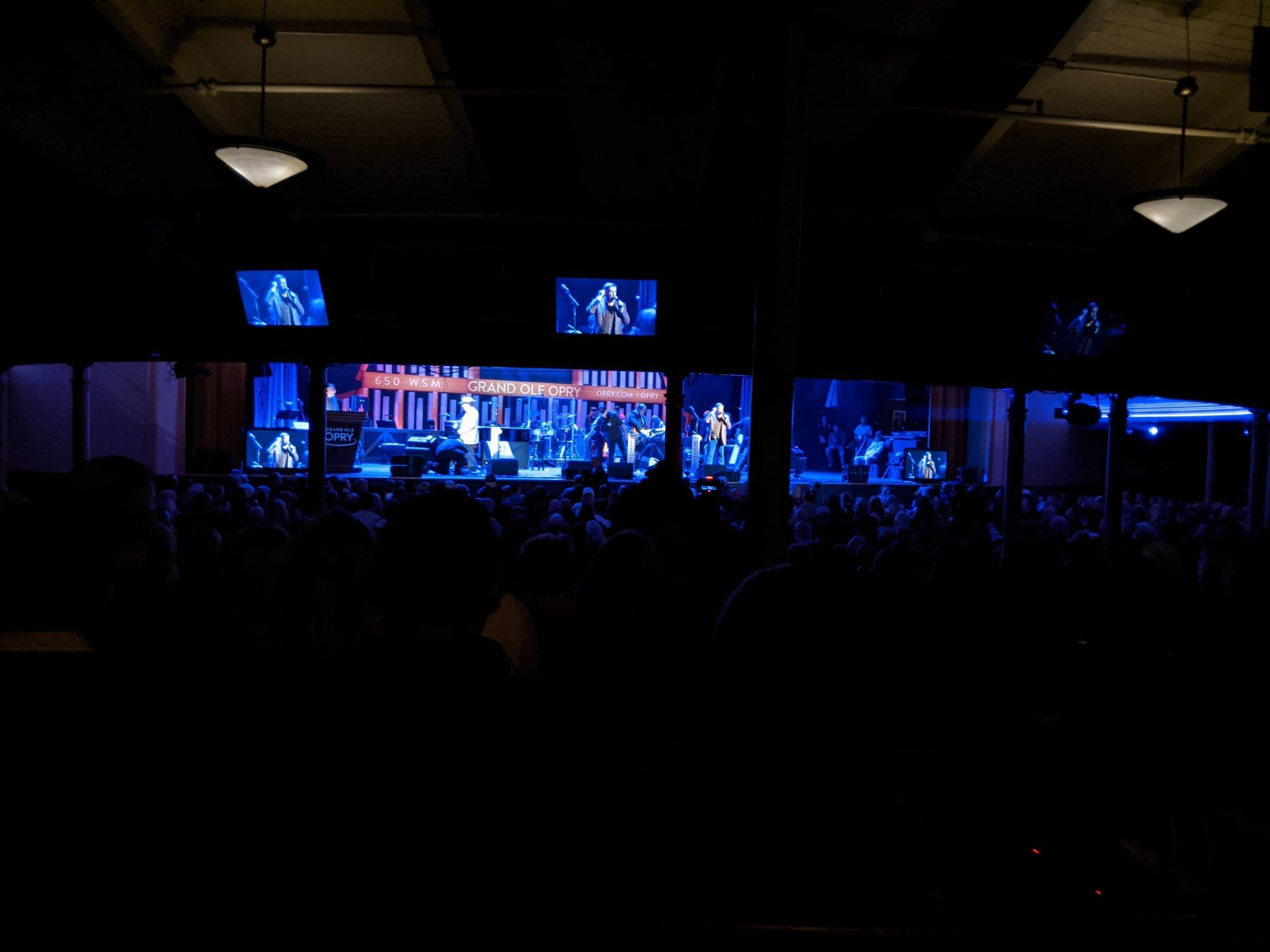
Pole obstructions do become a factor for these seats as well, however most seat views are pretty good at avoiding them.
Opry at the Ryman Show Times
Most nights of the Opry at the Ryman have two times that are back to back. If you choose to attend the later show, be prepared to stand in the lobby (or even outside) until the other show lets out. The turnover time is quite extreme depending on how long the show runs. For the most efficient parking and accessibility information, go here. When our team went, there was only 15 minutes to clear out one show before letting the next crowd fill in.
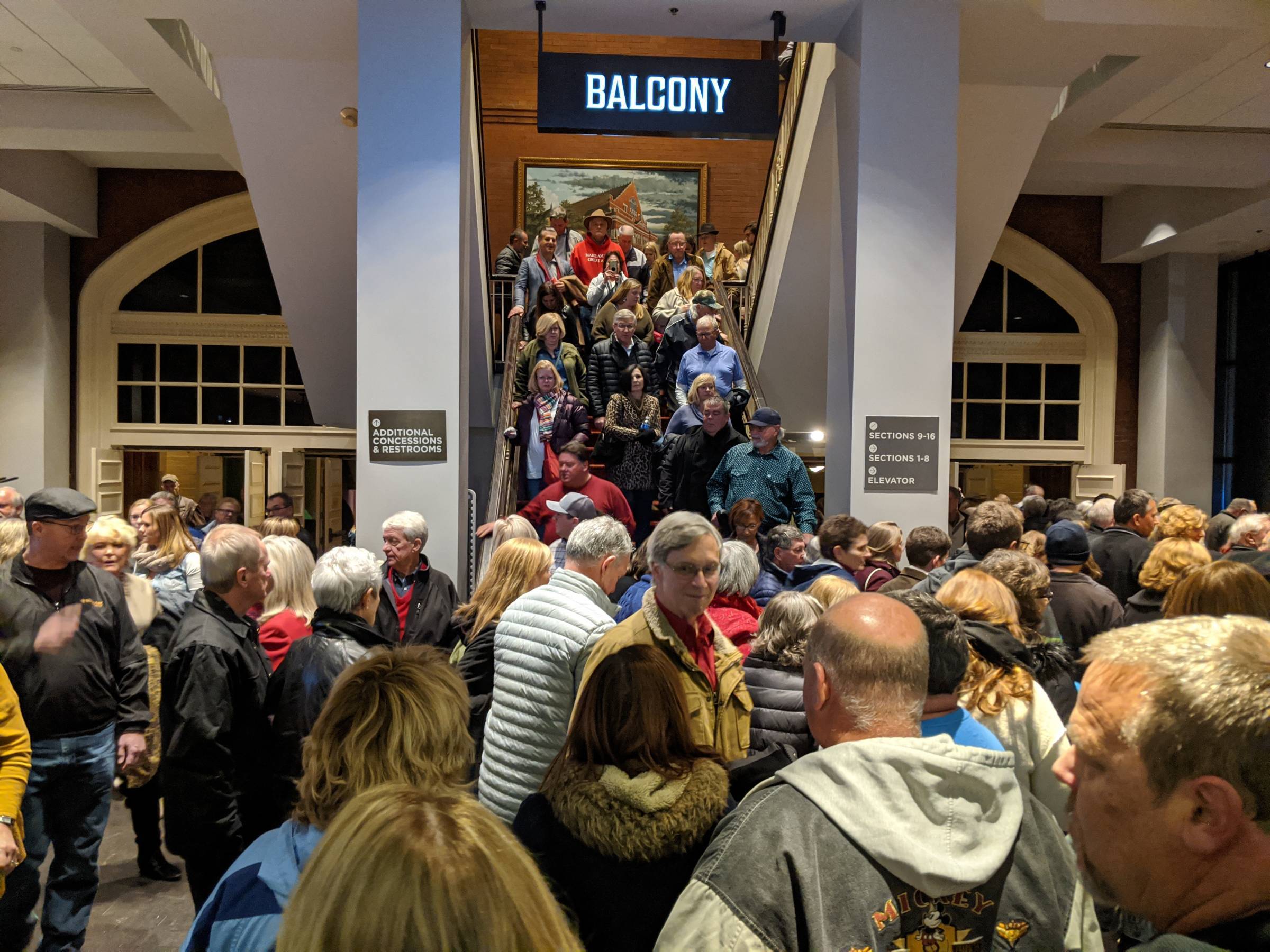
What is the Grand Ole Opry?
Its not uncommon to wonder, "What is the Grand Ole Opry?". Is it a place? A thing? A show? When we hear about someone who plays the Grand Ole Opry what does that mean?
Background on the Grand Ole Opry
The history of the show dates back to 1925 and has always been tied to Nashville, TN. It started out as a radio show playing country music that became wildly popular. So popular in fact that fans began coming to the studio of the show to watch the performance live.
From there, the show continued to grow until it became a staple in Nashville and country music's culture. Today, the Grand Ole Opry still plays over the radio waves every Tuesday, Friday, and Saturday year-round. The show also has its own home at the Grand Ole Opry House located just a few miles outside of downtown.
The Live Show Happens Three Days a Week
The show itself features a wide variety of country music artists. It is broken up into half hour "sets" with a host and guests. The guests perform 1-3 songs during the performance and that's it. These short sets allow the show to give listeners a variety of country music flavor, including today's pop style and even country comedy.
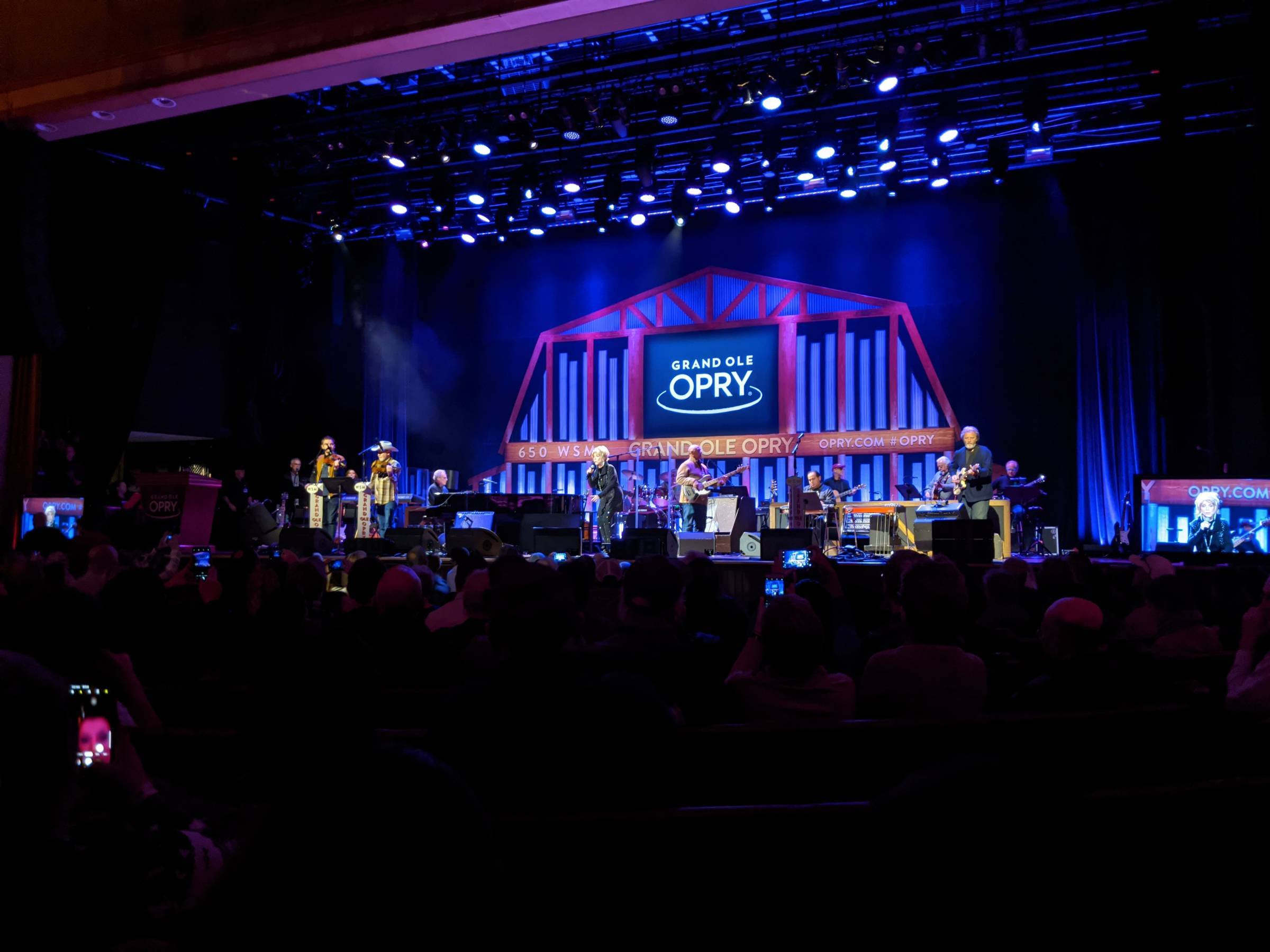
The Grand Ole Opry Has Members
The Grand Ole Opry is also a community of invite-only members. It is considered one of the highest honors in the country music world to receive an invite.
How do members get invited? Well it is a decision made by the show's management and only the shows management. There are not specific criteria guidelines to receive an invite to become member of countries most prestigious community. Instead, the committee's decisions revolve around many topics including passion for country music, commitment to fans, and relationships among other things.
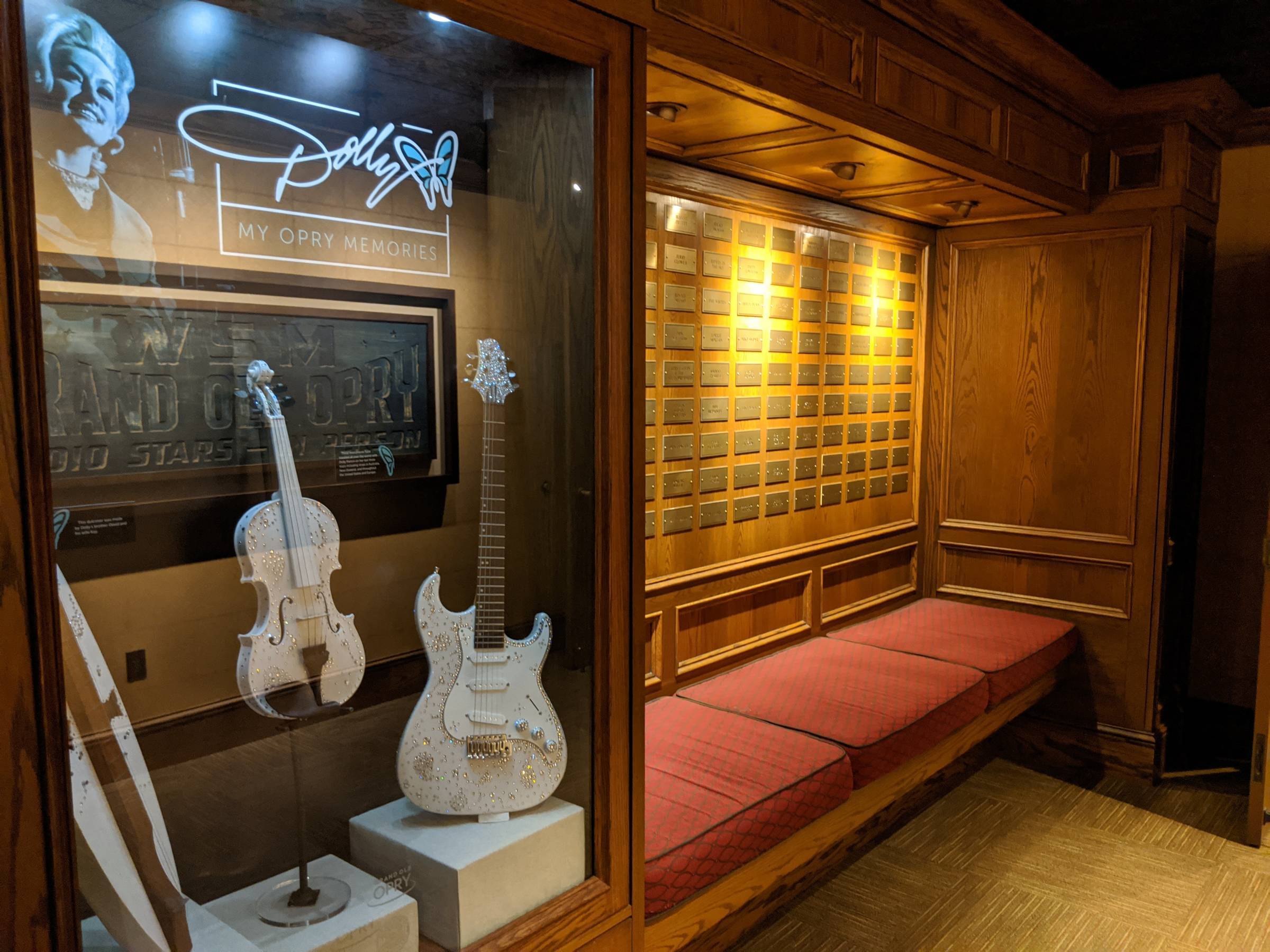
Many of country's biggest names are members of the Grand Ole Opry including Carrie Underwood, Keith Urban, Dolly Parton, Alan Jackson, Reba McEntire, Garth Brooks, Randy Travis, Darius Rucker, and many many more.
The Home of the Opry - The Grand Ole Opry House
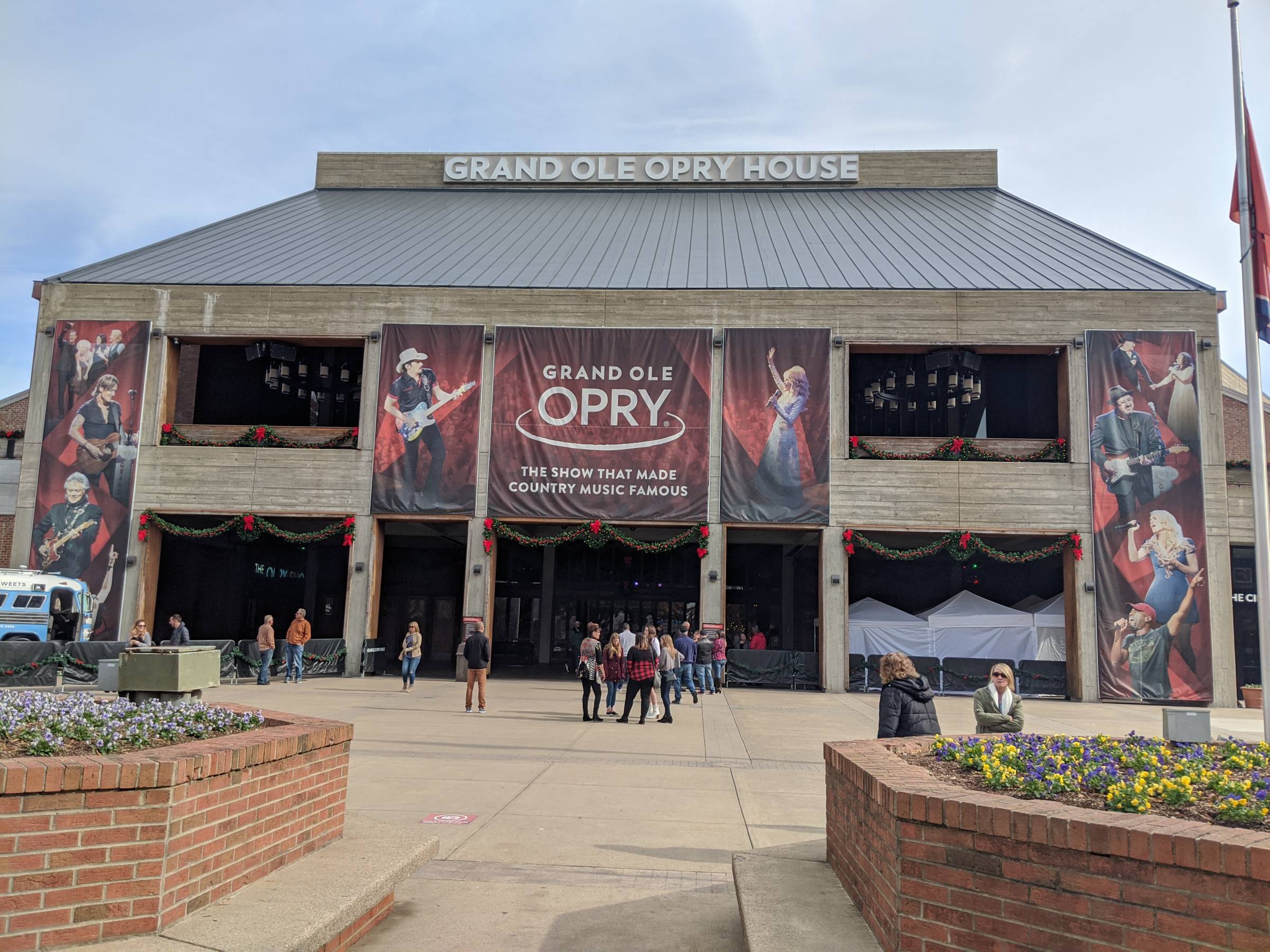
Another reason fans may be confused is because the Grand Ole Opry show is held in the Grand Ole Opry House. This venue was built specifically for the show and has been its home since 1974 where it plays three days a week during the months of Februray-October. Performers who are about to be invited to become a member while playing a regular show at The Grand Ole Opry House. While performing on stage, a current member will surprise the performer with the invite. It is one of the coolest traditions that has continued throughout the years and will continue into the future.

